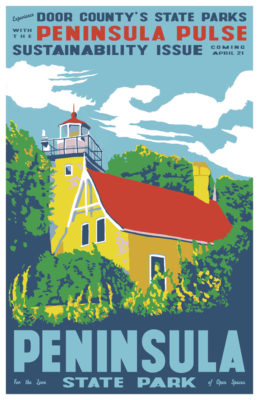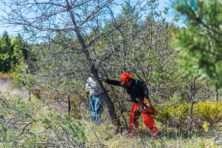Peninsula State Park Begins Pine Planation Thinning
- Share
- Tweet
- Pin
- Share
 Everyone can keep calm as loggers head into Peninsula State Park this winter; it is all part of the master plan.
Everyone can keep calm as loggers head into Peninsula State Park this winter; it is all part of the master plan.
“We don’t have a lot of pine plantations but we have some and the master plan for the park, when you look at vegetative management, is to convert pine plantations to native hardwood forested areas which would increase diversity,” said Peninsula State Park Superintendent Kelli Bruns.
Tree thinning will take place at the park in a two-year period, taking place between October and March through 2017. Thinning of the conifer plantations is essential to the health and continued growth of the trees.
“These plantations were established at high tree densities that require periodic thinning to give trees adequate growing space to maintain vigor,” said Bruns.
These plantations were likely put in place in the early 1900s, when Wisconsin was being heavily logged and the state and locals began attempts at replenishing the forest.
By thinning some of these plantations, the trees and other species can thrive.
“It increases the diversity of not only the tree species but the undergrowth, the ground vegetation and the wildlife that uses them,” said Bruns.
The Scotch pine is also being slated for removal as a non-native and sometimes invasive species.
Also planted in the early 1900s, Scotch pine had more applications than reforestation.
“Scotch pine was typically brought in and planted by all of the people that lived here in the early 1900s, which include people that planted them for ornamental purposes, so Christmas trees, or they would plant them for agricultural purposes to prevent soil erosion or as wind breaks,” said Bruns.
Bruns emphasized that tree thinning is a frequent and heavily regulated process that state parks across the country employ as vegetation management.
“It’s not a new process,” said Bruns. “It’s a process that was vetted through the state park’s ecologist, through the regional ecologist. We look at all the natural and cultural resources before any of this is put out.”
And once it is put out, strict attention the Wisconsin Department of Natural Resources (DNR) puts on the process makes many companies weary to bid.
“If you look at the flip side of it, not a lot of people want to work in these types of environments in state parks because we regulate the loggers so much,” said Bruns. The small return on the removed trees, which can only become paper and pulp given their small size and type of wood, goes back to the park’s segregated fund. Whatever comes out of Peninsula State Park goes right back in.


